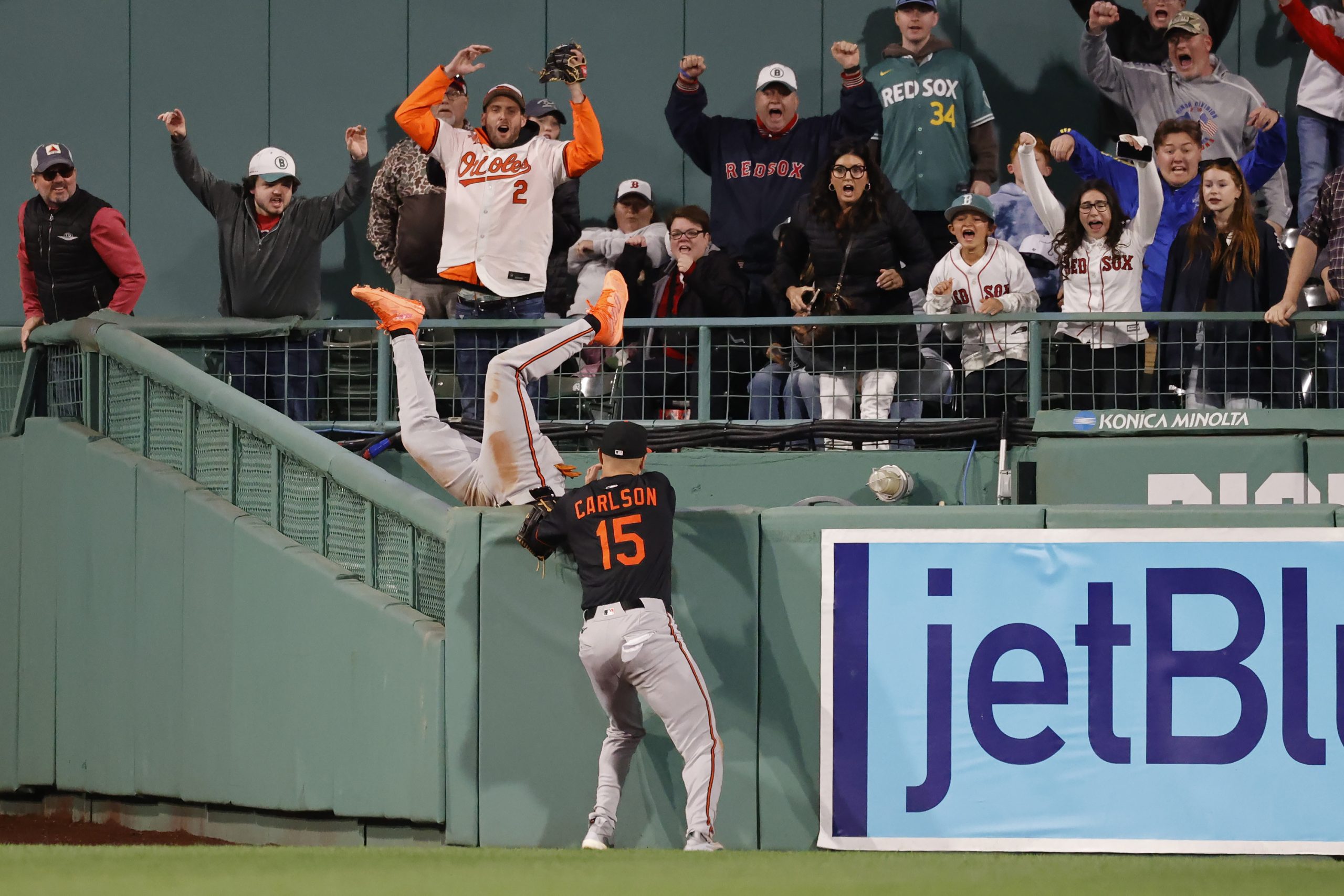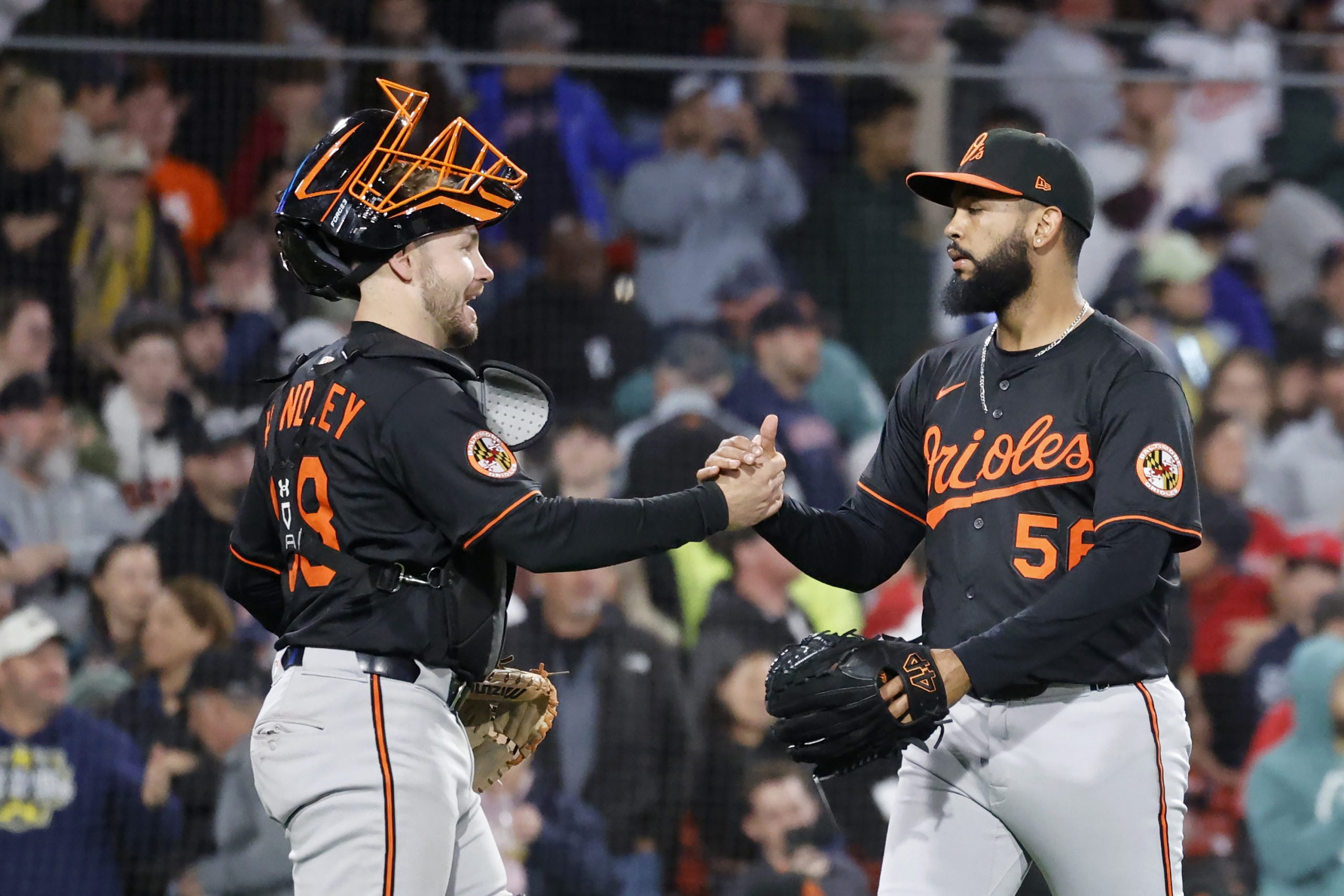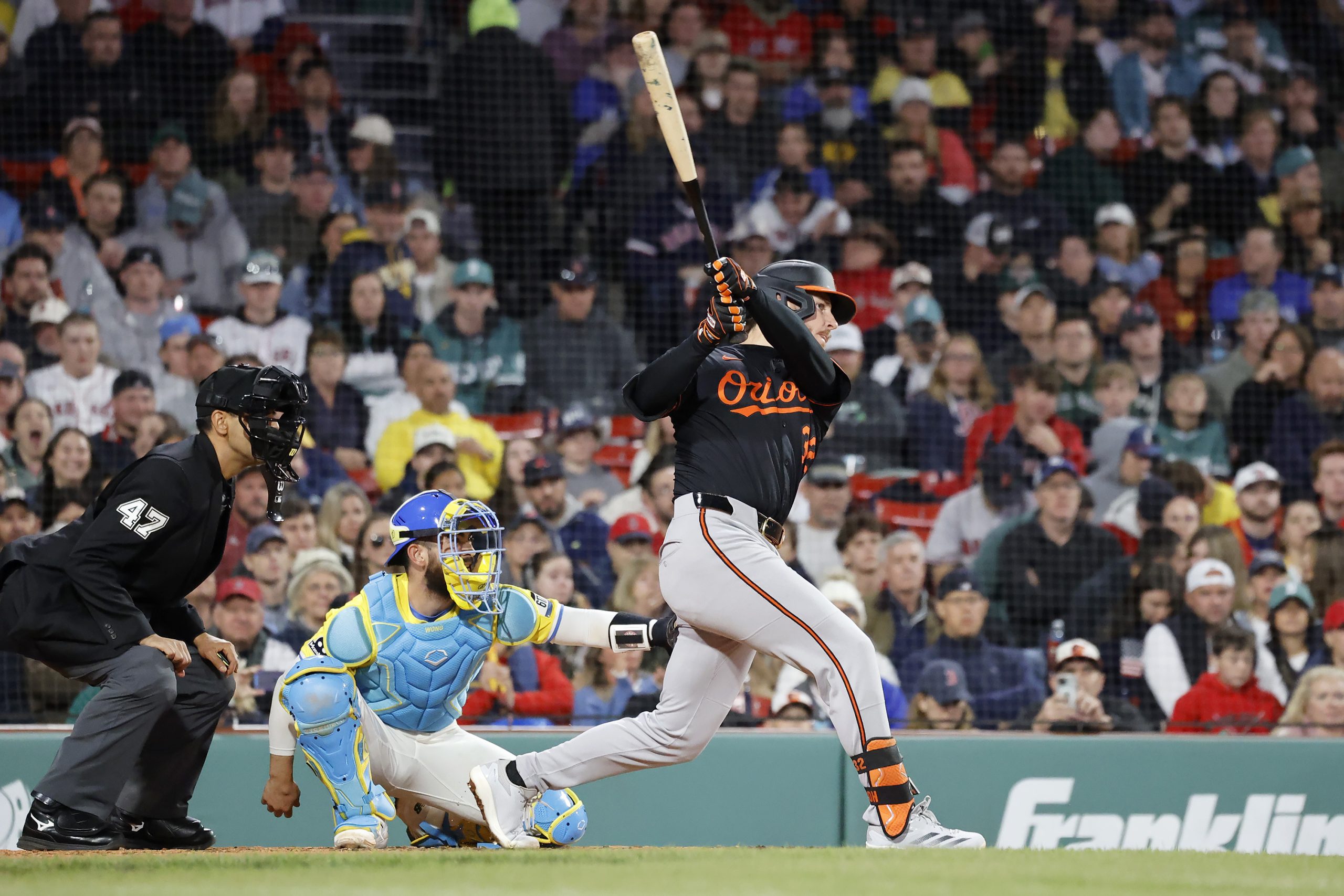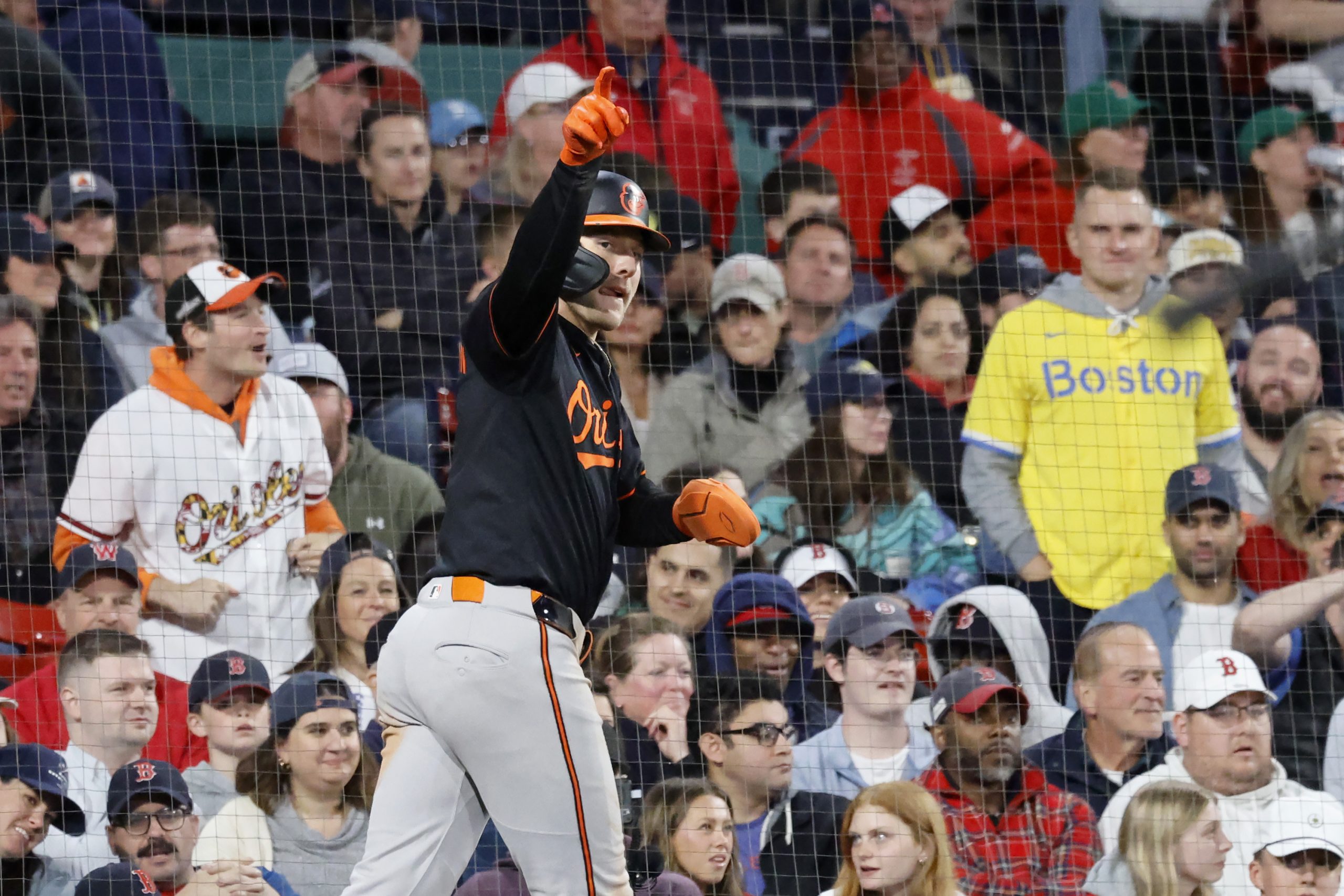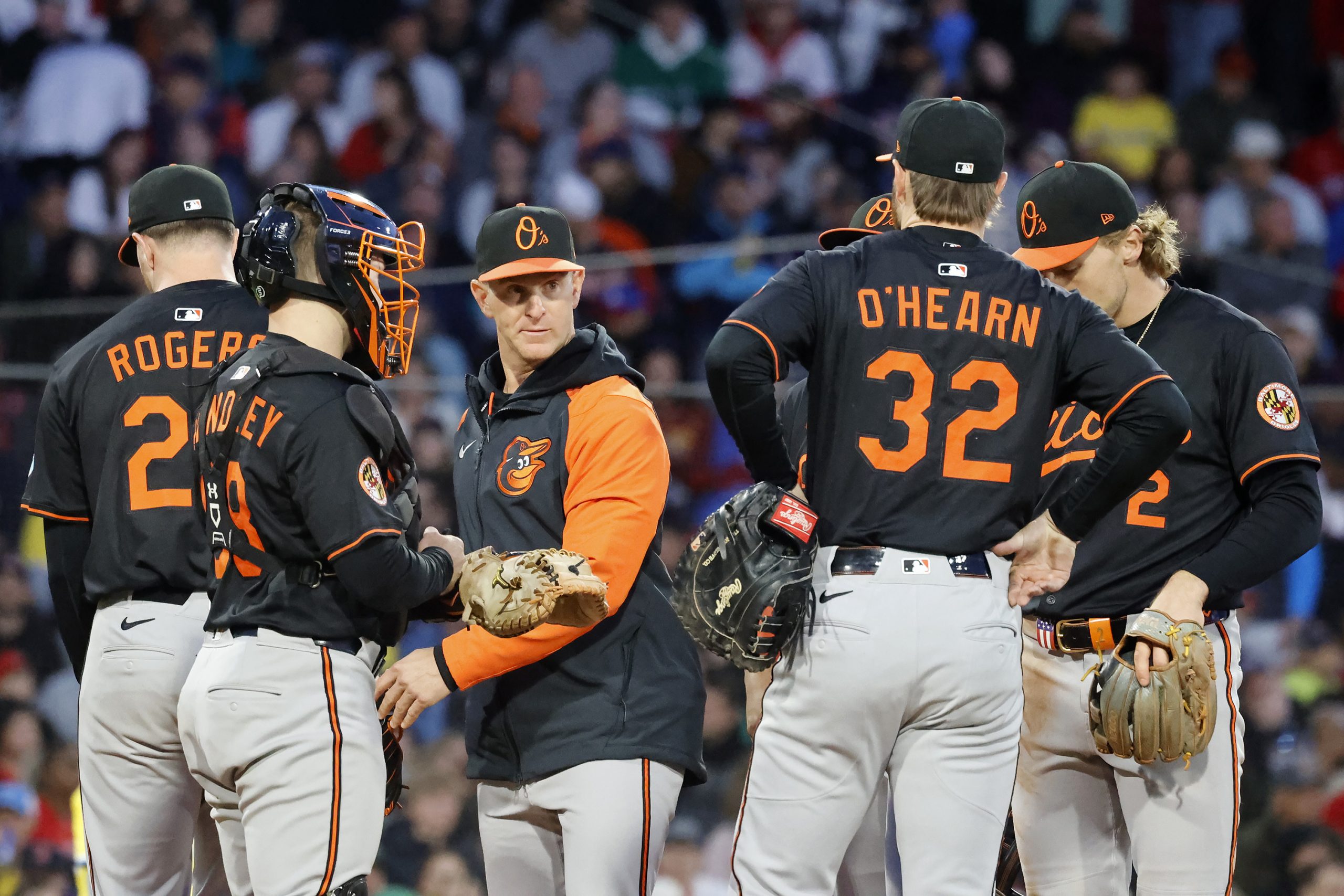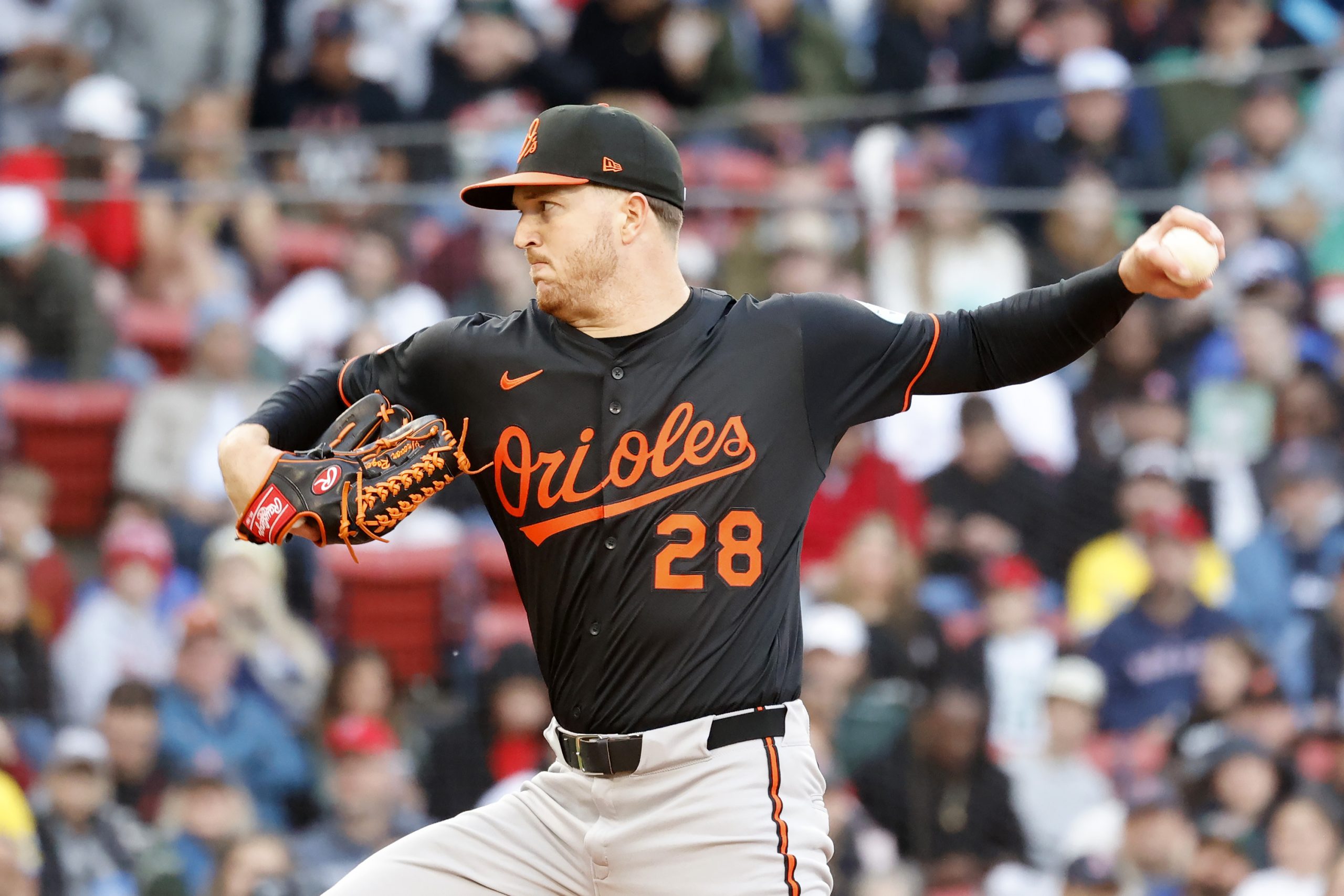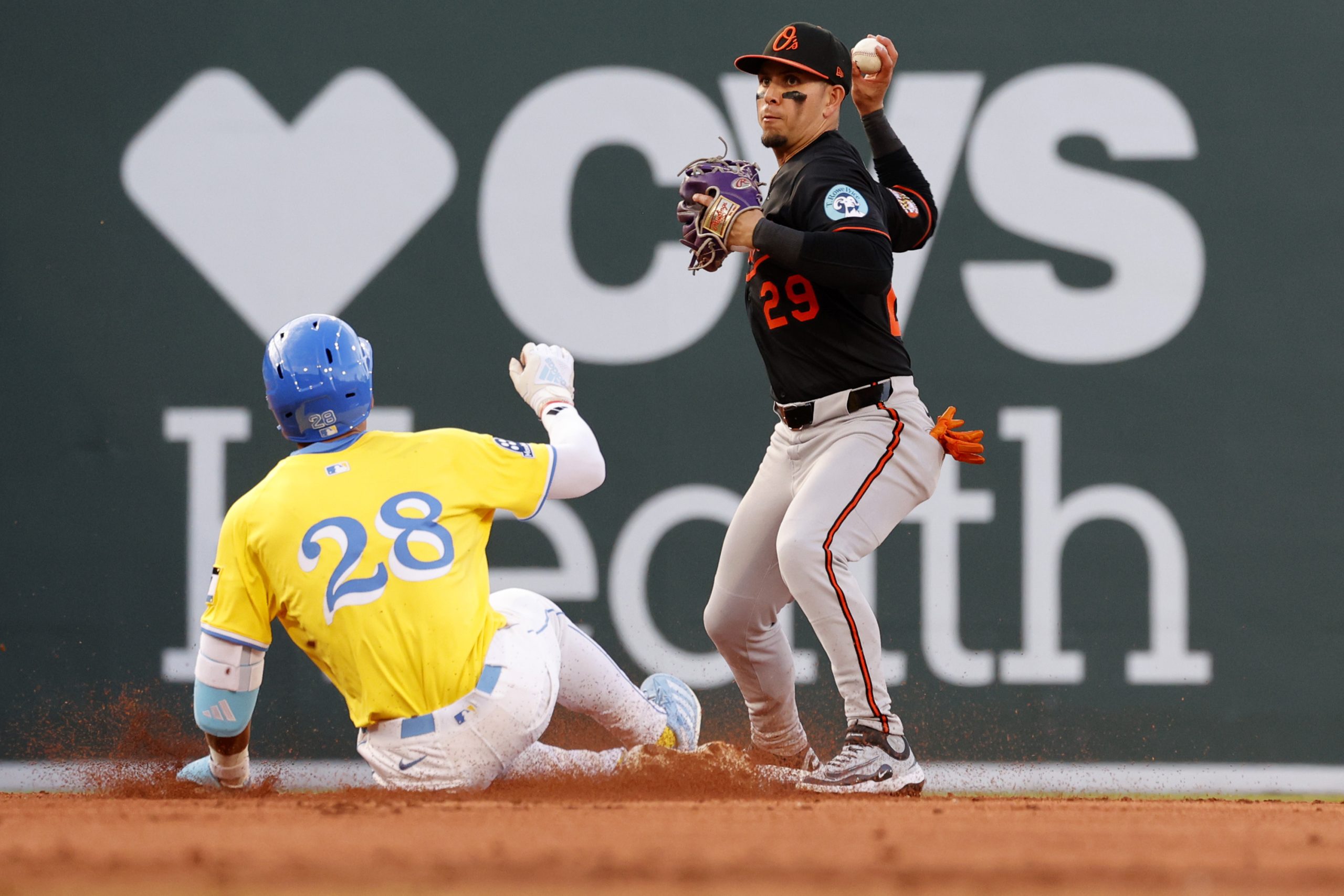BOSTON — Before Saturday night’s game, Trevor Rogers starting on the mound felt to some like the Orioles were waving the white flag.
Now, it’s difficult to imagine him not getting another start next week.
Rogers, the much-maligned left-hander, made his season debut in Game 2 of Baltimore’s doubleheader against the Red Sox and twirled the best performance by an Orioles starter this year. Rogers, the club’s 27th man for the twin bill, pitched 6 1/3 scoreless innings and his bullpen was just as stellar as the Orioles won, 2-1, to split the doubleheader at Fenway Park after the Red Sox won Game 1 on Rafael Devers’ walk-off single.
“I was really happy for Trev and really happy for the Baltimore Orioles watching him pitch,” interim manager Tony Mansolino said. “Just everything that’s surrounding him, watching him maybe struggle a little bit last year when we got him and just kind of some of the flack that the organization got for him. We just saw a guy that looked pretty good to me.”
Ryan O’Hearn’s RBI single in the eighth of Game 2 gave the Orioles a 1-0 lead, while Dylan Carlson’s RBI double in the ninth gave Baltimore’s bullpen some much-needed cushion. Seranthony Domínguez allowed a solo homer to Abraham Toro in the ninth, but the right-hander who imploded in Friday’s 19-5 loss bounced back to slam the door for the five-out save.
The win is only Baltimore’s second in its past 12 games, fifth this month in 21 tries and second since the Orioles fired skipper Brandon Hyde and promoted Mansolino.
The Orioles acquired Rogers, a controllable starter with a track record of success and injury issues, at last year’s trade deadline from the Miami Marlins, and the immediate results were poor. The 27-year-old southpaw posted a 7.11 ERA in four starts, experienced diminished velocity and was demoted to Triple-A. He suffered a partially dislocated kneecap during the offseason, missed spring training and was on the injured list to begin the season. Upon his return, the pitching lines in Triple-A Norfolk were not encouraging.
Then, Rogers on Saturday pitched in the big leagues for the first time since August, and he shoved. With a fastball averaging 93.3 mph and topping out at 95.6 mph, Rogers carved up a Boston lineup that scored 19 runs on Friday (though eight of those were off a position player) and six in Game 1. That’s a significant uptick from late last season when he was averaging 88-91 mph. Just as important, Rogers’ demeanor on the mound looked more like the pitcher who was an All-Star with the Marlins in 2021 and not the shell of himself that he looked last year.
Rogers was about as introspective as a player can be postgame. He said the past year caused “a lot of self doubt.” He questioned whether he’d ever get back to being a consistent big leaguer again and why he kept “going backwards” despite the work he was putting in. His gem against the Red Sox served as validation.
“In the back of my mind, I always knew what I could do,” Rogers said. “You go through life and life’s going to suck sometimes and you never know when it’s going to turn around, but I know for certain it’ll never turn around if I quit on myself. So I just kept putting in the work, hoping in the back of my mind that it’ll turn around. Today was a big step forward.”
Catcher Maverick Handley said he could tell from the start of the game that Rogers was locked in.
“The first one, I caught it a little bit higher, a little bit more velo on it. I was like, ‘Oh [crap], he’s ready to play today,’” the backup catcher said.
Through six innings, Rogers had retired all but one batter he faced and struck out five batters, including a few looking on fastballs that appeared to take Red Sox hitters by surprise. Before he plunked Rob Refsnyder in the seventh inning, Rogers had retired 16 straight hitters. Kristian Campbell then blooped a single to right field, and Mansolino pulled Rogers for right-hander Andrew Kittredge.
While Tomoyuki Sugano has delivered several stellar starts, Rogers’ outing was the most dominant by a member of Baltimore’s rotation this season. Dean Kremer’s seven shutout innings with two strikeouts against Kansas City is the only one in the same stratosphere.
As expected, Rogers was returned to Norfolk after the start so the Orioles could carry another reliever in the next few days. Mansolino didn’t indicate whether the lefty would be recalled next weekend, but given the club’s rotation woes, it’s hard to argue that Rogers doesn’t give them the best chance to win one of those games.
Kittredge escaped Rogers’ jam in the seventh but then got into one of his own in the eighth. With a thin bullpen after Mansolino used five relievers in Game 1, Domínguez replaced Kittredge (1-0) with two runners on and also found a way to strand both, getting Devers to pop out with the tying- and go-ahead runs on second and first base. After controversially not intentionally walking Devers ahead of his walk-off knock earlier in the day, Mansolino did not considering giving him a free pass in what would’ve been an unconventional spot to do so — loading the bases and putting to go-ahead run in scoring position.
“We trusted Frenchie [pitching coach Drew French] to sprinkle his magic dust on Seranthony right here, and he did and it worked,” Mansolino said.
On Toro’s solo shot in the ninth, Jorge Mateo, playing center field for only the second time this season, nearly robbed it but couldn’t corral the ball as he went tumbling over the wall into the Red Sox’s bullpen. Mansolino and head athletic trainer Scott Barringer went to check on Mateo and he remained in the game — a good thing, too, since the speedster made a sliding catch to end it.
Instant analysis
The discourse surrounding Mike Elias as the Orioles’ general manager is lacking nuance.
A starved fan base rightfully frustrated by the state of the ballclub is now directing its ire toward Elias after the Orioles fired manager Brandon Hyde last weekend. The Orioles owning one of the majors’ worst records is, after all, more Elias’ fault than Hyde’s.
But it’s not as black and white as many are making this out to be. Baseball is never binary, and Rogers’ performance Saturday was the latest proof.
Elias’ lack of investment in his rotation is the topic that’s earned him the most criticism, and rightfully so. The Orioles entered the doubleheader with the worst ERA in MLB and one of the sport’s least effective rotations. However, mixed in with his failures in this department (Jack Flaherty at the 2023 deadline, Charlie Morton this past offseason) are successes (Zach Eflin at the 2024 deadline, Tomoyuki Sugano this past offseason).
The biggest whiff — well, maybe until Saturday — was Rogers, for whom Elias gave up prospects Kyle Stowers and Connor Norby to acquire at the 2024 trade deadline. Stowers is in the midst of a breakout campaign, and each big blast of his while Rogers was in the minors served as a reminder of a deadline deal gone wrong. But Rogers showcased that he might still have some upside left to flash.
But if this season has taught us anything, it’s that baseball is a strange and silly game. Time hasn’t run out on Rogers or the impact of that trade.
What they’re saying
Mansolino on Rogers’ presence on the mound:
“This is a guy who was really good going back to 2021. As a pitcher, I’ve got to imagine the stuff that he felt and the way that he felt the ball coming out of his hand probably reminded him of what it used to feel like going back a couple years. He looked confident.”
By the numbers
The Orioles are 7-8 against American League East opponents and 10-26 versus the rest of MLB. The win ended the club’s 11-game streak of allowing four or more runs.
On deck
After splitting the doubleheader, the Orioles will look to split the series Sunday afternoon. Dean Kremer will start for Baltimore opposite Red Sox righty Walker Buehler.
Have a news tip? Contact Jacob Calvin Meyer at jameyer@baltsun.com, 410-332-6200 and x.com/JCalvinMeyer.


